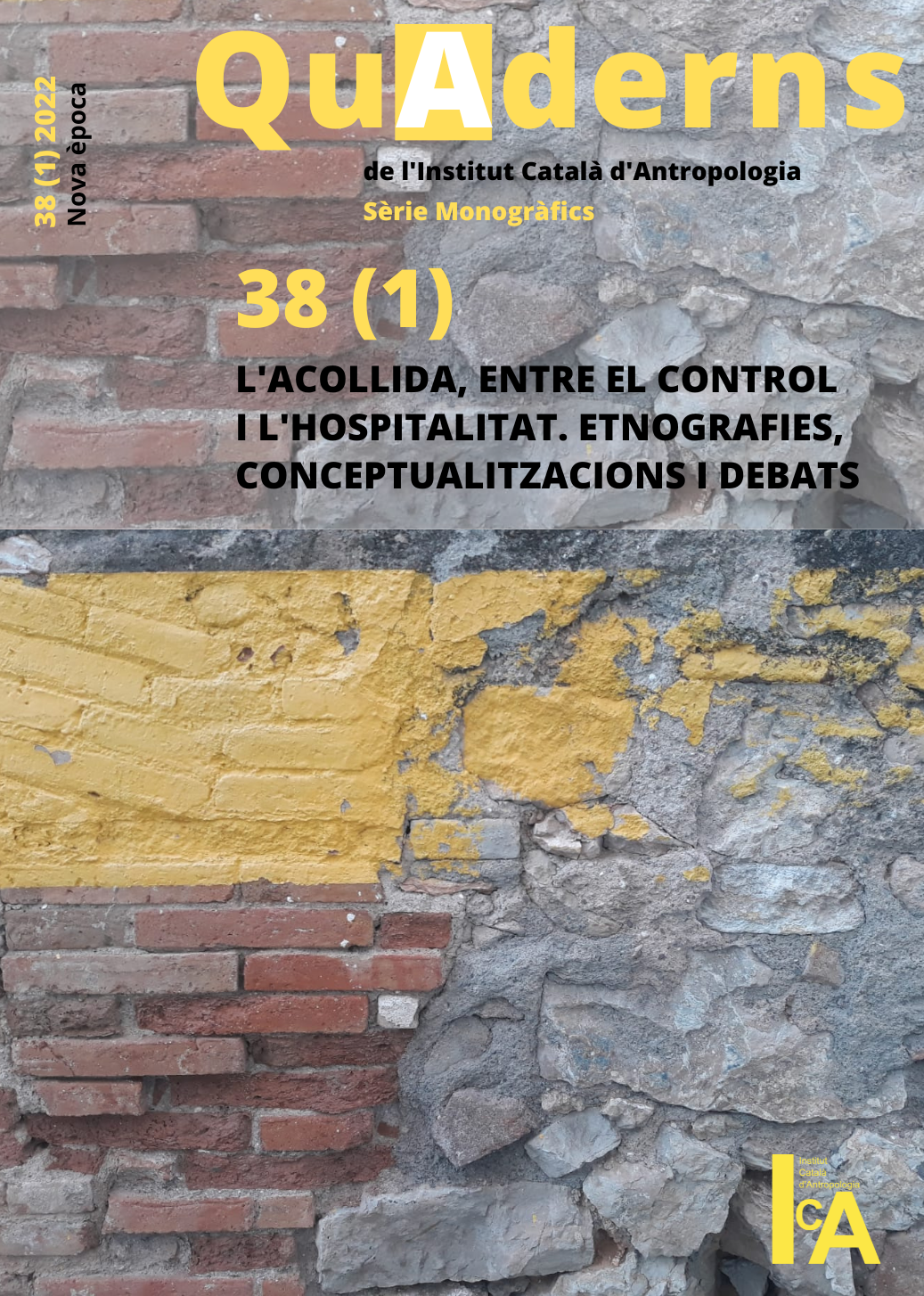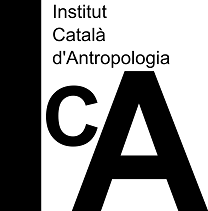Violence-related forced migration from the Central America Northern Triangle to Catalonia: exploring processes of reception and resilience
DOI:
https://doi.org/10.56247/qua.395Keywords:
forced migration, reception, international protection, Northern Triangle, resilienceAbstract
Reception and support processes for the integration of migrants have focused in Catalonia unequivocally on economic migration and family reunification, without specifically considering the needs and dynamics related to refuge and asylum. As a consequence, since 2015 media attention has focused on the reception of refugees from imageries related to the Syrian war and its related conflicts in the area, rather than on the arrival of unexpected flows of people from Central American countries known as the Northern Triangle area, who are fleeing away from gang violence and extortion, especially from El Salvador and Honduras. This article presents the results of the ethnographic fieldwork carried out within the framework of a project financed by the Institut Català Internacional per la Pau on the arrival of this refugee population in Catalonia from a family, gender and generation perspective, to guide proposals aimed at supporting their resilience and repair process.
Downloads
Global Statistics ℹ️
|
1069
Views
|
691
Downloads
|
|
1760
Total
|
|
References
ACNUR (2019). Global trends forced displacement in 2019. https://www.unhcr.org/statistics/unhcrstats/5ee200e37/unhcr-global-trends-2019.html
ACNUR (2019). Informe sobre desplazamiento forzado en Centroamérica. https://www.acnur.org/desplazamiento-en-centroamerica.html
ACNUR (2010). Nota de orientación sobre las solicitudes de la condición de refugiado relacionadas con las víctimas de pandillas organizadas. Ginebra. https://www.acnur.org/fileadmin/Documentos/BDL/2010/7786.pdf
Barnard, H. R. (2012). Social Research Methods: Qualitative and Quantitative Approaches,London: Sage Publications.
Callamard, A. (2018). Informe final de la relatora: Misión El Salvador. Naciones Unidas. https://www.ohchr.org/SP/NewsEvents/Pages/DisplayNews.aspx?NewsID=22634&LangID=S Fecha de consulta: 20 de septiembre de 2021]
Carrasco, S. & Poblet, G. (2021). Memòria de la recerca R-ICIP Victimes de maras del Triangle Nord a Catalunya. Institut Català de la Pau i AGAUR. Informe no publicado.
Carrasco, S. (2019). Infancia, refugio y educación: ¿del horror al olvido? Afkar ideas: Revista trimestral para el diálogo entre el Magreb, España y Europa, 64-71.
Carrasco et al. (2018). Abandono Escolar Prematuro y alumnado de origen extranjero en España: ¿un problema invisible? en: Arango, J., Mahía, R., Moya, D. y Sánchez Montijano, E. (dir.) Anuario CIDOB de la inmigración 2018. Barcelona: CIDOB, 211-236. DOI: https://doi.org/10.24241/AnuarioCIDOBInmi.2018.212
Consejo Económico y Social. (2019). La inmigración en España. http://www.ces.es/documents/10180/5209150/Inf0219.pdf
Crul, M. et al. (2019). How the different policies and school systems affect the inclusion of Syrian refugee children in Sweden, Germany, Greece, Lebanon and Turkey, Comparative Migration Studies, 7 (10), 1-20. DOI: https://doi.org/10.1186/s40878-018-0110-6
Fuentes, E. E. (2019). Aproximación a la Mara Salvatrucha 13 de El Salvador: origen, transformación y la problemática de su tratamiento penal. [Tesis doctoral, Universitat de Girona], https://www.tdx.cat/handle/10803/672467
Granovetter, M. (1976): The strength of weak ties, American Journal of Sociology, vol. 78, (6), pp. 347-367. DOI: https://doi.org/10.1016/B978-0-12-442450-0.50025-0
Guber, R. (2011) La etnografía: Método, campo y reflexividad, Bogotá: Grupo Editorial Norma.
Iglesias-Martínez, J. & Estrada, C. (2018). ¿Birds of passage? La integración social de la población refugiada en España. Iberoamerican Journal of Development Studies, 7(1): 144-167. https://doi.org/10.26754/ojs_ried/ijds.279 DOI: https://doi.org/10.26754/ojs_ried/ijds.279
Jiménez, E. V. (2016). La violencia en el Triángulo Norte de Centroamérica: una realidad que genera desplazamiento. Papel Político, 21(1), 167-196. http://dx.doi.org/10.11144/Javeriana.papo21-1.vtnc DOI: https://doi.org/10.11144/Javeriana.papo21-1.vtnc
Martínez D’Abuisson, J.J. (2015). Ver, oir y callar: un año con la mara salvatrucha 13. Logroño: Pepitas de Calabaza.
Martínez D’Aubuisson, J. J. (2018). The transformation of Salvadorian maras: Consolidating power at the margins. Cultures Conflits, (2), 141-156. DOI: https://doi.org/10.4000/conflits.20357
Martínez, Ó. i Martínez, J. J. (2018). El niño de Hollywood. México: Debate.
Martorell-Faus, M. & Carrasco, S. (2021). Honduran children’s views on migrating to Barcelona: narratives of violence, hardship and family strategies. En M. Montero- Sieburth; R. Mas; J. Eguren; N. Garcia-Arjona (Eds.), Contemporary Perspectives on migrant families, children and youth. London: Routledge, 63-82. DOI: https://doi.org/10.4324/9781003132561-3
Massey, D. S., Arango, J., Hugo, G., Kouaouci, A. & Pellegrino, A. (1999). Worlds in motion: understanding international migration at the end of the millennium: understanding international migration at the end of the millennium. London: Clarendon Press. DOI: https://doi.org/10.1093/oso/9780198294429.001.0001
Moodie, E. & D’Aubuisson, J. M. (2015). En las llamas de la paz: La quema de un microbús en y los significados de la violencia. In O. Meléndez i A. Bergmann (Eds.), Violencia en tiempos de la paz: conflictividad y criminalización en El Salvador. San Salvador: Secretaría de Cultura de la Presidencia.
Navarro-Lashayas, M. A. (2014). Sufrimiento psicológico y malestar emocional en las personas migrantes sin hogar. Revista de la Asociación Española de Neuropsiquiatría, 34(124), 711-723. DOI: https://doi.org/10.4321/S0211-57352014000400005
Pedone, C. (2006). Estrategias migratorias y poder: tú siempre jalas a los tuyos. Quito: Abya Yala.
Poblet, G. (2020). Migrantes, trabajadoras y ciudadanas. Estudio de caso sobre mujeres migrantes trabajadoras del hogar en Barcelona. Identificación de necesidades y trayectorias sociolaborales. Focus on International Migrations, 6. Bellaterra: Servei de Publicacions UAB.
Ryan, L. (2011). Migrants’ social networks and weak ties: accessing resources and constructing relationships post-migration. The Sociological Review, 59(4), 707-724. DOI: https://doi.org/10.1111/j.1467-954X.2011.02030.x
Sandoval, C. (2015) No más muros, exclusión y migración forzada de Centroamérica. Instituto de investigaciones sociales. San José de Costa Rica: UCR.
Sandoval, C. (2016). Migraciones en América Central. Políticas, territorios y actores. San José de Costa Rica: Editorial UCR.
Sanz, J.L. & Martínez. C. (2019). El viaje de la Mara Salvatrucha II. La letra 13. In Martínez, O. (Coord.) Crónicas desde la región más violenta, México, Penguin Random House.
Serban, M. (2007). Mecanismos de desarrollo de la migración a nivel de comunidad: redes de migrantes y tipos de vínculos, Migraciones, 21, 159-188.
UNICEF (2016). Desarraigados: una crisis creciente para los niños refugiados y migrantes. División de datos, investigación y políticas. New York: UNICEF.
Wolf, S. (2017). Mano dura: The politics of gang control in El Salvador. University of Texas Press. DOI: https://doi.org/10.7560/311219
Downloads
Published
How to Cite
Issue
Section
License
Distributed under the terms of the Creative Commons Attribution 4.0 International Use and Distribution License (CC BY-NC-SA 4.0)




